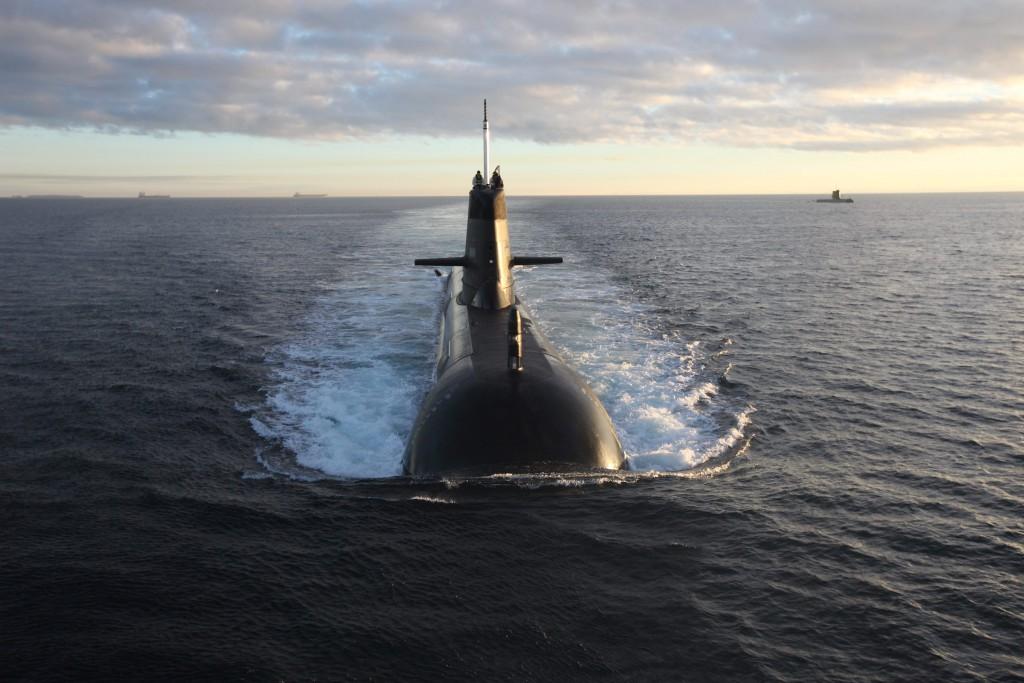Thinking about submarines
Posted By Mark Thomson on April 8, 2014 @ 06:00
Three presumptions underlie current planning for Australia’s future submarine capability—three ‘musts’. First, the Collins class must be replaced when it reaches its life-of-type. Second, the replacement boats must be built in South Australia. Third, the new boats must have conventional (ie non-nuclear) propulsion.
On Wednesday and Thursday, ASPI’s ‘Submarine Choice’ [2] conference will explore Australia’s future submarine in line with these stipulations. To do otherwise would cause confusion and dismay among the assembled insiders, such is the abiding belief in the need for a conventionally-powered, locally-built replacement for the Collins.
Elsewhere, true believers are harder to find. Among many people I talk to, there’s cynicism about the future submarine—hardly surprising given the twin debacles of the Collins and Air Warfare Destroyer programs. We may be approaching the point where taxpayers think they’re being asked to throw good money after bad.
Yet future policies should be informed by more than past failures. A domestic diesel-electric submarine program should be judged on its merits, taking into account the costs, risks, benefits and alternatives. And while there has been a lot of discussion of large boats in comparison to small boats, and new designs as opposed to existing designs, somewhat less time has been spent examining—or at least explaining—the underlying ‘musts’ that have so far fixed the broad parameters of the program.
When I began preparing for the submarine conference more than a month ago, I found myself drawn to re-examine the underlying presumptions upon which the submarine program rests. My original plan was to produce three short blog posts for The Strategist on the three ‘musts’. I rapidly found myself working through difficult, and often subtle, questions raised by them. Paragraphs morphed into pages, days into weeks. The result is this extended essay [3] (PDF).
Taking the time to re-examine issues already decided might be viewed as an unwelcome diversion from the real job of getting on with replacing the Collins. It isn’t. With so much at stake, each and every aspect of this multi-billion dollar program needs to be continuously examined to ensure that we get it right.
By necessity, the essay is more an exploration of issues than an argument for one course of action over another—I honestly don’t have a firm prescription for how to proceed. All I have to offer is the series of observations summarised below.
- No weapons system is worth having at any price. As the cost of weapons systems change, and as the amount of money available for our defence changes, so too does the optimal force structure. Submarines aren’t worth having if they impose too high an opportunity cost on the remainder of the ADF. Depending on the cost of replacing the Collins and the size of the defence budget looking forward, the submarine might need to join the aircraft carrier and long-range bomber as an extinct species in the evolutionary tree of the ADF.
- On the basis of existing strategic policy, the strongest argument for retaining conventional submarines rests on the unilateral ability to deter or defeat a South East Asian adversary in a situation where the United States is unable or unwilling to support us. If this conclusion is accepted, two corollaries follow. First, a submarine of more modest ambitions than that outlined in the 2009 White Paper will be adequate for our purposes. Second, the less than existential consequence of such a scenario erodes the imperative of retaining submarines.
- The practical, economic and strategic augments for mandating that the next generation of submarines must be built in Australia are unpersuasive. However, the potential benefits to extant players are so concentrated, and the prospective costs imposed on taxpayers are so dispersed, that the political momentum for a domestic build is likely to be unstoppable.
- In theory at least, many of the technical and logistical challenges of moving to nuclear propulsion in the next generation of Australian submarines could be surmounted by leasing or buying boats from the US. And while there would remain serious questions about independence of action in some situations, it appears feasible for Australia to operate US boats provided they’re willing to support us in the venture. There’s no reason to think that this would be cheap.
- A move to operate US-built nuclear submarines would entail a fundamental shift in Australian strategic policy—from a policy focused on continental defence, to one directly supporting and encouraging a strong US role in the region. The result would be a qualitatively different sort of alliance between Australia and the US with significant repercussions across the region. Ultimately, it’s upon those strategic consequences that the option should be judged, rather than upon the technicalities of nuclear propulsion.
An expanded discussion of each of these points can be found in the essay [3] (PDF) along with much more. I hope readers will have the time to at least take a look.
Mark Thomson is senior analyst for defence economics at ASPI. Image courtesy of Department of Defence [4].
Article printed from The Strategist: https://aspistrategist.ru
URL to article: /thinking-about-submarines/
URLs in this post:
[1] Image: https://aspistrategist.ru/wp-content/uploads/2014/04/Collins-sub.jpg
[2] ‘Submarine Choice’: https://www.aspistrategist.ru/events/the-submarine-choice-aspis-international-conference,-canberra
[3] this extended essay: https://www.aspistrategist.ru/publications/miscellaneous-research/the-three-musts/The-three-musts-MarkThomson2.pdf
[4] Department of Defence: http://images.defence.gov.au/20100704ran0000000_136_DRN.jpg
Click here to print.
